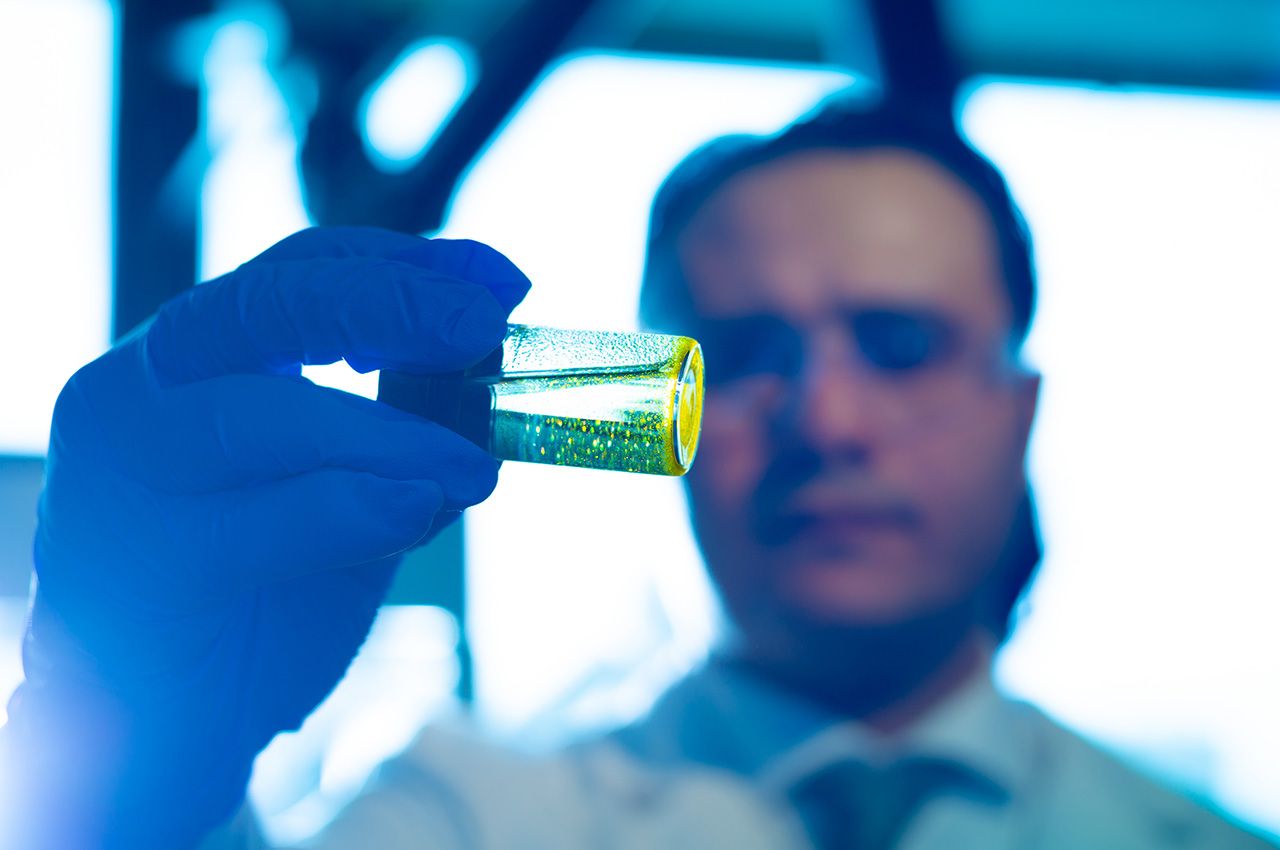Goodbye Gasoline, Hello Water

Running a vehicle on water—not gas—sounds like an idea pulled straight from fiction.
A breakthrough discovery by a team of scientists from Illinois Institute of Technology and Massachusetts Institute of Technology may soon turn it into reality, however.
A team led by Illinois Tech Assistant Professor of Chemistry Sameh Elsaidi and Research Assistant Professor Mona Mohamed of the university’s Center for Separation Science and Sustainability published a paper in March 2024 titled “Tri-Metallic Catalyst for Oxygen Evolution Reaction Enables Continuous Operation of Anion Exchange Membrane Electrolyzer at 1A cm−2 for Hundreds of Hours.” In the publication, they present the creation of a new catalyst that could bring fuel cells to the masses that are powered by nothing more than water.
How is this possible?
For starters, cars powered by hydrogen fuel cells, including the Honda Clarity, Hyundai Nexo, and Toyota Mirai are already on the market. While these vehicles exist, owners are currently faced with problems including a relatively undeveloped infrastructure for refueling and extravagant prices for hydrogen. Right now, California is the only state in the continental United States where you can find a hydrogen refueling station; even then, the price of hydrogen at these stations is as high as $36 per kilogram, meaning the cost to fill a standard five-kilogram tank approaches $200.
The device patented by Elsaidi’s team solves both the infrastructure and cost problem. If you’ve got water coming out of your tap at home, you’re good to go.
“The material we work with is a crystalline material called metal-organic framework,” says Elsaidi. “The beauty of crystalline material, like this means that the material—as a structure—is precise to the atomic level. It allows us to carefully manipulate and refine the catalyst to continuously improve its performance.”
The device relies on a new catalyst, which is comprised of a combination of earth-abundant nickel, cobalt, and iron to split water into hydrogen and oxygen. Typically, catalysts that split water into its two separate elements are made from platinum and iridium. Issues with using these precious metals as catalysts include cost, as both platinum and iridium are currently more expensive than gold, and stability as both traditional catalysts are only stable for few hours. In contrast, the new catalyst costs a tiny fraction of those precious metals and is stable for up to 600 hours.
“Currently, we have a catalyst that can do both jobs better than the existing benchmark commercial catalysts,” says Elsaidi.
When implemented into the device created by the team at Illinois Tech and MIT, this means that fuel cell vehicles can simply be filled with water. The catalyst within the water electrolyzer device will then convert that water into hydrogen and oxygen, removing the need for prohibitively large hydrogen storage tanks, which must be stored under extremely high pressure.
Another cost-increasing aspect of traditional water electrolyzers is the need for separate platinum catalysts for hydrogen production and iridium catalysts for oxygen production, resulting in increased waste and added synthetic expenses. The team at Illinois Tech is currently refining their new catalyst to function as a bifunctional material capable of producing both hydrogen and oxygen, further lowering the cost.
“The most exciting part is if we can use the same material for the two sides of the reaction,” says Mohamed. “When you make a catalyst, you need solvents and you need chemicals. Instead of having two catalysts, you just have one that can do both functions. You have a catalyst for the hydrogen evolution reaction and you have the same catalyst for the oxygen evolution reaction—the same chemical, the same solvent, the same synthetic method. This reduces the cost.”
What does this mean for the consumer?
In short: if you’ve got access to water, you’ve already got the infrastructure necessary to run the fuel-cell vehicle of the future, for less than what it costs to wash dishes in your kitchen sink.
But how soon could a car be powered by this new catalyst?
“Five years,” says an optimistic Elsaidi, though he acknowledges this timeline will require an abundance of support, both at Illinois Tech and beyond. “There are several steps before it reaches car production. First of all, the material development is very important, as is the engineering part. Material is scaling up, and then testing the material and performance. Then, it will go to the step of using it in the car itself. That is our hope.”




